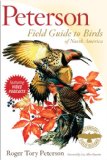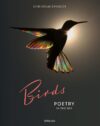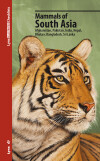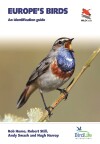


For the most part, the new Peterson guide uses the same plates that Roger Tory Peterson had prepared for his Eastern and Western regional guides. However, some significant changes have been made. Some new species have been added, most due to taxonomic splits, but others because of new records. Conversely, some species have been removed, mostly rare vagrants or exotics that would not be encountered normally. Many illustrations have also been modified. In most cases this was accomplished through digital editing of Peterson’s paintings. Using this technique new field marks have been added, and other changes made that better reflect our growing understanding of field identification. In a few cases, the entire image has been replaced with a new painting.
The following is a list of major changes between this guide and the latest editions of the regional guides: the 5th edition of the Eastern (2002), and 3rd of the Western
(1990). I have included every new, removed, and completely redone image that I found. I started noting every digital enhancement as well, but there proved to be too many to list.
- Barnacle Goose – new full illustration, previously just the head was shown
- Cackling Goose – new species, “Richardson’s” and “Aleutian” are shown
- “Mexican Mallard” – added
- Eiders – the outlines of the heads are redone
- King Eider –male in flight has been redone, and the bill-shield is now bright red
- Tufted Duck – male and female redone
- Smew – redone
- Stray Waterfowl Added: Mandarin; Bar-headed, Chinese, and Egyptian Goose
- Stray Waterfowl Removed: Bean, Pink-footed, Lesser White-fronted, Red-breased Goose; Whooper Swan; Baikal Teal; Red-crested Pochard
- Greater Sage-grouse – now shows full female, instead of the male; male in display redone
- Gunnison Sage-grouse – added male in display
The displaying male sage-grouse do not show the yellow air sacs. This is one of the sage-grouse’s most well-known features, so their absence is surprising and conspicuous. - Himalayan Snowcock – added
- Loons – the head outlines are gone, and replaced by nonbreeding birds in flight, which have been redone from the 5th edition
- Black-capped Petrel – the “under” image, with a slight change to the bill and white collar, had been labeled as a Bermuda Petrel in the 5th edition. Based on other guides, it looks ok.
- Sooty Shearwater – upperside in-flight removed
- Removed: Stejneger’s, Streaked, Solander’s Petrel
- Added: Fea’s Petrel
- Redone: Band-rumped, White-faced, European, and Fork-tailed Storm-petrels
- Leach’s Storm-petrel – dark-rumped form added
- Cormorants in flight plate is redone and now only shows immatures
- Scarlet Ibis – removed
- Removed: Western Reef-heron, Little Egret, Jabiru
- California Condor – redone; immature’s head removed (I don’t know why, there was room for it)
- Removed: White-tailed Eagle, Steller’s Sea Eagle
- King Vulture – inset of head removed (no big loss, as they aren’t likely to recolonize this region)
- Common Black-hawk – redone
- Added: Eurasian Kestrel, Eurasian Hobby
- “Dark Birds of Prey Overhead” – dark morph Broad-winged redone, and Short-tailed Hawk added; Snail Kites removed (disappointing, as there was room for them on the page with the overhead kites)
- “Gallinule” chick renamed to “Moorhen” chick – corrected a label change that was missed in the 5th edition
- Removed: Corn Crake, Paint-billed Crake, Spotted Rail
- European Golden-plover – standing birds removed, now only shown in flight
- Removed: European Woodcock, Great Snipe, Jack Snipe, Far Eastern and Eurasian Curlew, Spoonbill and Broad-billed Sandpipers
- Bar-tailed Godwit – “European” form in-flight added
- Whimbrel – “Eurasian” form added in-flight
- Short-billed Dowitcher – “coastal breeding” added
- Long-toed, Red-necked, Little Stint –winter illustrations removed
- Common Snipe – added in-flight
- The gull molt sequence page gets rid of the standing birds and now only shows the in-flight images
- Slaty-backed Gull – standing bird removed
- Lesser Black-backed Gull – added a first year in-flight
- Added: Black-tailed and Yellow-legged Gulls
- Ruddy Ground-dove – portrait of head replaced by in-flght painting
- Parrots – full illustrations of Green and Yellow-chevroned Parakeet added; the exotics included have been changed extensively
- Thick-billed Parrot – removed
- Redone: Western and Whiskered Screech-owl
- Flammulated Owl – gray phase no longer shown
- Calliope Hummingbird – redone
- Green-breasted Mango – adult male added
- Blue-throated and Magnificent in-flight removed
- Removed: Bahama Woodstar and Bumblebee Hummingbird
- Removed: White-collared, Common, and Fork-tailed Swifts; White-throated Needletail
- Red-bellied Woodpecker – immature’s head removed
- Flicker/Sapsucker plate taken from Western, therefore female Yellow-shafted and Yellow-bellied Sapsucker immature are no longer shown
- Ivory-billed Woodpecker – female head removed
- Empidonax – all have been retouched, some extensively. The Buff-breasted and Pacific-slope/Cordilleran (“Western”) have been completely redone
- Redone: Vermillion Flycatcher, Northern Beardless-tyrannulet, La Sagra’s Flycatcher
- Removed: Couch’s Kingbird (painting only, account still present), Cuban Pewee, Greenish and Caribbean Elaenia, Variegated and Social Flycatcher, Loggerhead Kingbird, and Masked Tityra
- Removed: Eurasian Jackdaw and immature Brown Jay
- In-flight comparison of American, Fish, and Tamaulipas Crows added
- Redone: Black-capped, Black-tailed, and California Gnatcatchers
- Bluethroat – redone
- Bluebirds: all redone; female Eastern removed!!!!!
- Bicknell’s Thrush – illustration added
- Aztec Thrush – redone
- Removed: Olive-backed and Pechora Pipit; Gray Wagtail
- Added: Hill and Common Myna
- Crested Myna – removed
- MacGillivray’s Warbler – redone
- Removed: Crescent-chested and Fan-tailed Warbler, Slate-throated Restart
- Golden-crowned Sparrow – now only heads are shown
- Pyrrhuloxia – redone
- Redone: Cassin’s Finch and Lawrence’s Goldfinch
Many of the accidental and exotic species found at the end of the plates in the Eastern guide are no longer included. The Orange Bishop has been added.
Likewise, this guide does not include most of the vagrants from Mexico and Asia that were illustrated on separate plates in the Western edition.
Most of the species additions and removals are appropriate. This field guide really didn’t need to include European Woodcock and Masked Tityra, for instance. However, some species were removed that probably should not have been. For example, Western Reef-heron and Loggerhead Kingbird have occurred in this region several times in the past few years, and Crescent-chested Warbler has even bred here (granted, some of these records may have occurred after the selection decisions for this guide had to be made). While these species are not illustrated in most North American field guides, keeping them in this one should not have been hard.
However, the other omitted illustrations are more problematic and inexplicable. These include the missing immature California Condor and Red-bellied Woodpecker, and especially the female Eastern Bluebird. The lack of any female bluebird is totally inexcusable, especially since there is plenty of room on the plate. Hopefully it is an oversight that can be corrected in future printings.
For the most part, however, the changes made have improved the guide and its usefulness.
For more information on this guide, see its featured page – The New Peterson Guide.
Posted by Grant McCreary on July 21st, 2008.








Hi! I was surfing and found your blog post… nice! I love your blog. 🙂 Cheers! Sandra. R.